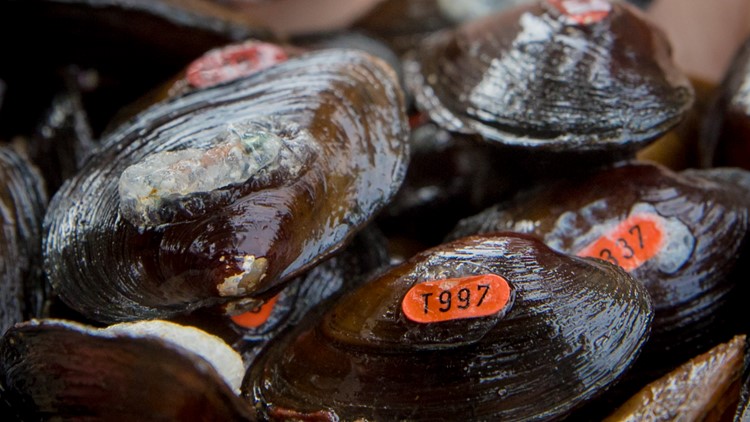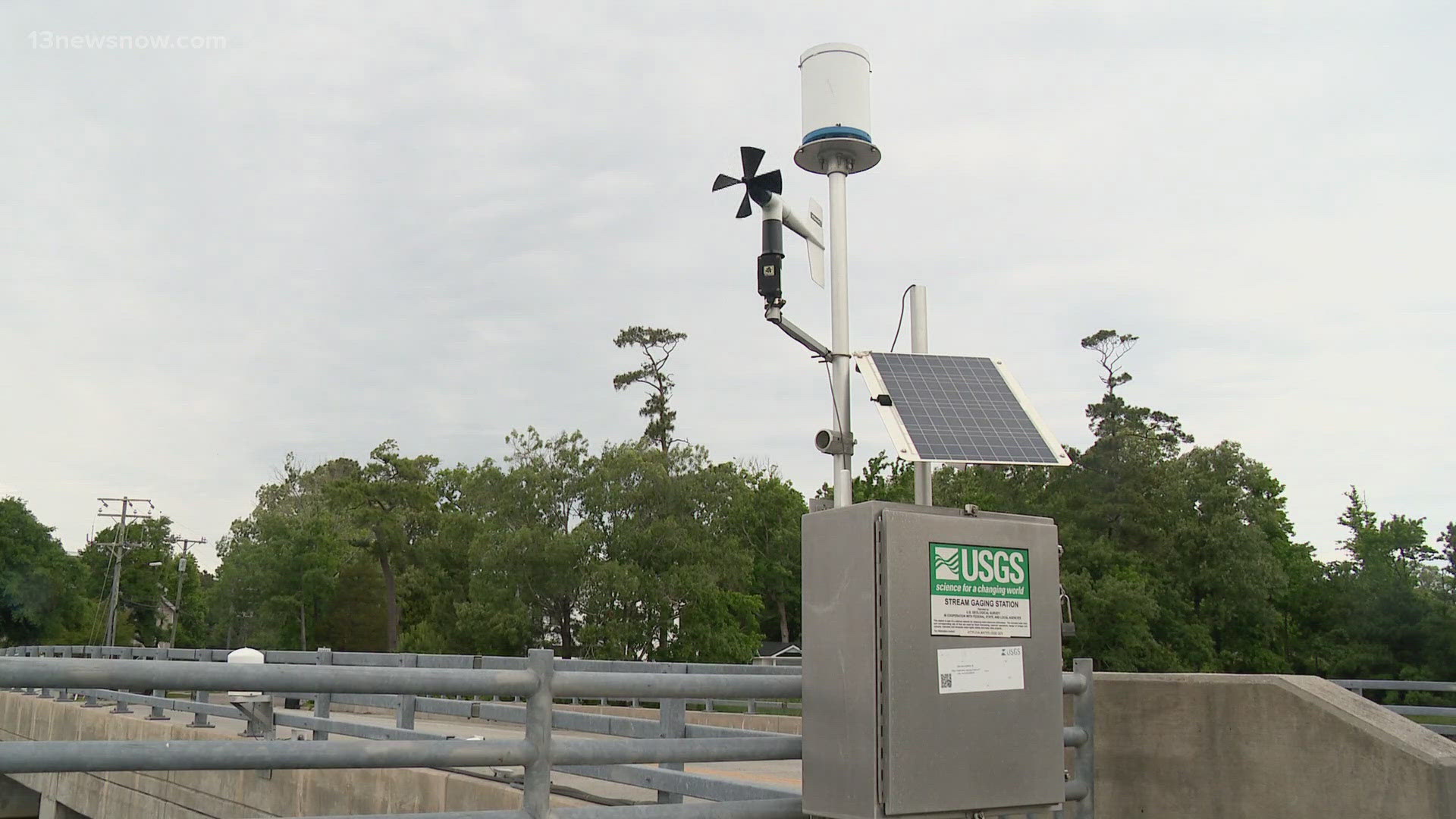NORFOLK, Va. — An endangered species of freshwater mussels is returning to the James River, over 50 years since disappearing from its native home due to pollution and other factors.
In August, the Virginia Department of Wildlife Resources (DWR) and the U.S. Fish and Wildlife Service (FWS) released 1,300 James Spinymussels into the river in Central Virginia. The goal is to restore the species' historic population.
The mussels are marked with tags, and researchers will monitor them for survival and reproduction, according to the Chesapeake Bay Foundation (CBF).
To reintroduce the mussels, experts wore wetsuits and snorkel masks to carefully place them on the bottom of the river.
The Virginia DWR describes the species as a small freshwater mussel under three inches long and one of only three spined freshwater mussel species in the United States.
DWR Aquatic Resources Biologist and State Malacologist Brian Watson explained that the species is an indicator of how suitable or safe the water is for people.
"Healthy mussels mean healthy water, and healthy water helps keep humans healthy," Watson said in a news release.
Pollution and other things caused the species to disappear in the main stem of the James River, but they survived in streams that feed the river.
“A lot of it probably had to do with pollution due to historic uses on the James River," Watson said. "The James is our largest river in Virginia, so there was a lot of industrial and developmental pressure on the river prior to the Clean Water Act in 1972.”
Water quality in the James River has gotten better over the last decade, allowing the more common mussel species populations that still inhabit the river to be healthy, according to DWR.
Joseph Wood, the Virginia senior scientist with CBF, said the reintroduction is a promising sign for the improving health of the James River, which flows into the Chesapeake Bay:
“The reintroduction of the James Spinymussel marks the culmination of significant efforts to bring back this native Virginia species. This is a promising sign for the improving health of the James River. Congratulations to DWR and USFS on this inspiring achievement. Great things happen when Virginia invests in mussel restoration.
“But even as Virginia’s freshwater mussel populations plummet, mussel restoration efforts remain underfunded. The growing enthusiasm for freshwater mussels in Virginia will hopefully lead to commitment, leadership, and investment in these amazing mollusks. For mussels to thrive, we must also continue to support programs that reduce pollution from agriculture, stormwater runoff, and sewage treatment plants.”
A second Spinymussel planting is expected to occur in the James River this fall, according to CBF.



